Red light therapy offers a simple yet effective way to speed up healing after surgeries and injuries. The treatment uses a special red light that penetrates deep into your body tissues to give your cells an energy boost when they need it most.
Many people find that their pain decreases faster, swelling goes down quicker, and injured areas heal more rapidly when adding this therapy to their recovery plan. Research shows good results for all kinds of injuries - from twisted ankles to surgical incisions. Best of all, it's completely non-invasive and works alongside your normal medical care without medication side effects.

How Does Your Body Heal After Surgery or Injury?
When you get injured or undergo surgery, your body immediately activates an impressive repair system. First comes inflammation—those familiar signs of redness, swelling, heat, and pain aren't just uncomfortable symptoms but your body's first defense. This initial response sends blood, nutrients, and immune cells rushing to the damaged area, clearing away debris and fighting potential infections.
After this cleanup phase, your body shifts to rebuilding mode. Special cells called fibroblasts create collagen scaffolding while new blood vessels form to supply oxygen and nutrients. This tissue repair process works differently depending on the injury type—skin heals differently than muscle or bone—but follows similar principles.
At the cellular level, your mitochondria (tiny energy factories inside cells) kick into high gear, producing extra ATP (cellular energy) to power the intense repair work. This regeneration phase can continue for weeks or months as tissue gradually strengthens and remodels itself. Your body's amazing self-healing capabilities work continuously, but factors like age, nutrition, blood flow, and overall health affect how quickly and effectively healing occurs.
What Is Red Light Therapy and How Does It Boost Healing at the Cellular Level?
Red Light Therapy employs the red and near-infrared lights to help your body recover faster. These soft light waves cause no harm to penetrate your skin and get to the cells where healing occurs.
When this light gets to your cells, it increases your cellular "power plants" (mitochondria), which generate more energy. With additional energy, your cells can heal faster, decrease inflammation, and increase blood flow to affected areas.
The beauty of red light therapy is how easy it is – no needles, no surgery, no drug side effects. You just hold the light on the damaged tissue for a few minutes. No surprise that increasing numbers of physicians, therapists, and sports experts add it to their practice for wound healing, pain reduction, and injury recovery.
How Red Light Therapy Helps You Recover After Surgery
Red light therapy is a simple treatment that will make your body heal better after surgery. Red light therapy works with special light that goes through your skin without harming it. Red light therapy is a non-surgical method that helps to heal better after surgery in conjunction with your regular post-surgical care.
Less Pain After Surgery
Red light therapy will also reduce pain after your surgery naturally. The light stops pain messages and causes your body to release its own natural painkillers. A majority of patients who get red light therapy after surgery report feeling less pain and needing fewer painkillers. You should feel pain relief in a few treatments, with greater benefits the longer you use it.
Reduced Swelling and Inflammation
Surgery will usually cause swelling that is painful and will slow healing. Red light therapy regulates swelling by affecting how your cells communicate with one another. The light reduces inflammation messages in your body while encouraging anti-inflammatory activity. Most people notice less swelling in 1-2 days after treatment starts.
Faster Healing of Incisions
Surgical wounds heal faster with red light therapy since it raises energy in your cells. That extra energy helps your body create new tissue and produce more collagen (the protein that heals wounds). Patients who use red light therapy tend to close their surgical wounds about 30% faster compared to healing with normal care alone. That is especially helpful for large incisions or if you have problems that cause healing delays.
Faster Healing of Incision
Red light therapy makes your scars look better as they heal. The treatment encourages your collagen fibers to grow in a more orderly pattern, preventing raised, visible scars. People who use red light therapy on their surgical scars have smoother, less visible scars that blend more closely with their natural skin color. To achieve the best results, start treatment early in your recovery.
How Red Light Therapy Helps You Recover From Injuries Faster
Red light therapy utilizes special healing light that penetrates deep into injured tissues. This calming light works on the cellular level to stimulate your body's own healing processes, enabling the injury to heal quickly than it would with conventional treatments alone.
Accelerates Muscle Recovery
When muscles are damaged or torn, red light therapy gives your muscle cells more energy to repair themselves. Active persons and athletes find they can get back to regular activities sooner when they have this therapy. The light prevents muscle weakness that would otherwise be present when you are unable to use the damaged part. In order to have the best results, start treatment within a few days of an injury.
Strengthens Healing Tendons and Ligaments
Torn ligaments and tendons (like tennis elbow or ankle sprain) are enhanced by the ability of red light therapy to boost collagen, the protein that gives these tissues their strength. The therapy enables new tissue to grow in the proper direction, thus making the area stronger after healing. People with sprains heal movement normally earlier, and people with chronic tendon problems have less stiffness and better long-term healing.
Relieves Pain Without Side Effects
Unlike pain medication, red light therapy addresses the source of pain and not the symptoms. The light reduces pain-inducing chemicals in the injured area and stimulates your body's own painkillers. Relief from pain is experienced by most patients after a few treatments, with increasing improvement over time. And the best part is that there are no side effects like stomach upset or drug addiction.
Reduces Swelling Effectively
After an injury, swelling can impede healing and lead to more pain. Red light therapy prevents swelling from being too much, but still allows the healing processes necessary to occur. Treatment during the first couple of days after injury is especially effective at reducing swelling. The therapy also increases fluid drainage from injured tissue, allowing the best conditions for faster recovery.

Why Red Light Therapy Helps Heal
Red light therapy is becoming popular for healing because it helps your body heal naturally. This simple treatment uses special light that travels through your skin to help heal from the inside out.
- Gives Your Cells More Energy: Red light therapy increases energy within your cells. Recharge your body's batteries, so to speak. With increased energy, your cells can fix damage more quickly. This assists particularly where blood flow is poor, such as in tendons, where healing would otherwise be slow.
- Increases Blood Flow: During recovery, you need a healthy blood flow to supply oxygen and nutrients to the injured tissue. Red light therapy creates new tiny blood vessels and opens up the ones you already have. It translates into more blood flowing to the injured areas and delivering everything your body needs in order to heal.
- Helps Build Better Tissue: Your body uses a protein called collagen to repair damaged tissue. Red light therapy helps your body make more collagen and keep it in proper alignment. This makes healed tissues stronger and less scarred. Whether it is skin, muscle, or other tissues, they heal better with this therapy.
- Handles Inflammation Better: Healing calls for a bit of inflammation, yet too much inhibits recovery. Red light therapy helps your body find the proper balance. It reduces damaging inflammation while allowing beneficial inflammation to exist. It also helps clear out waste products from healing tissues, allowing the environment to be cleaner for repair.
- Speeds Up Workout Recovery: Red light therapy facilitates the healing of muscles after exercise. It reduces soreness and muscle damage, so you can come back to activity quicker. Some competitors utilize it daily in order to speed up healing time between training sessions and stay clear of overtraining.
Why At-Home Red Light Therapy Works So Well
Having your own red light therapy machine puts healing technology at your fingertips, in the comfort of your own home. While clinic treatments remain great, owning your own machine has special benefits that can actually cause you to heal better. You can just integrate treatments into your daily routine, making red light therapy a part of your normal recovery and not something you do every now and then.
Regular Use Gets Better Results
Red light therapy works best when done on a regular basis. With a home device, you're treating yourself every day instead of once or twice a week in a clinic. Your body will respond well to consistent light treatment throughout your healing process instead of having big gaps between sessions.
Fits Around Your Life
Having your own machine means no waiting for appointments and visits to clinics. You can carry out treatments at a time which suits you best – maybe mornings before going to work, or in the evenings while watching television. This is especially handy if you have a busy job or are busy family, or find it difficult to get around. You also have the advantage of being able to treat yourself straight away when you have pain flares instead of waiting until your next appointment.
Saves Money In The Long Run
While it does cost money to buy a good home device, it usually ends up being cheaper than going to many clinic visits. Professional sessions get extremely costly when you require multiple of them. With your own device, you can use it as many times as you want, and your whole family can use it too. For chronic conditions, having your own device is even more cost-effective.
Personalized To Your Needs
With your own unit, you can customize your treatment to how your body responds. You can modify how long and how often you use it while you're recovering. Some stages of healing might need quick, frequent sessions, while others need longer treatments. Most people also use their devices for small complaints they wouldn't visit a clinic for, which can prevent little problems from growing into big ones.
How Do You Choose the Right Red Light Therapy Device?
Selecting the best red light therapy device has a significant effect on your recovery outcome. Since numerous devices are on the market, understanding the most significant differences among devices will lead you to the best choice that will best address your specific healing needs.
Key Specifications That Determine Effectiveness
When comparing red light therapy devices, some technical specifications have a direct influence on healing efficacy. The most important ones are wavelength range, power output, and coverage of the treatment area. Not all "red light therapy" devices provide the precise light parameters for biological effects. Studies indicate that therapeutic wavelengths with efficacy lie mainly in the 630-660nm (red) and 810-940nm (near-infrared) ranges. These specific wavelengths are able to penetrate tissues to different depths - red light can penetrate around 2-3mm deep (appropriate for skin and surface tissue), while near-infrared up to 5cm (penetrating deeper tissues like muscles and joints).
Red Light Therapy Device Comparison Chart
| Device Type | Treatment Area | Key Wavelengths | Power Density | Best For |
| Large Panels | Whole body or multiple large areas | 630-660nm & 810-940nm | 100-150 mW/cm² | Full-body recovery, multiple injuries, athletic performance |
| Medium Panels | Torso, back, legs | 630-660nm & 810-940nm | 40-80 mW/cm² | Targeted recovery for medium body regions, versatile use |
| Targeted Panels | Specific joints, localized areas | 630-660nm & 810-850nm | 30-60 mW/cm² | Focused treatment for specific injuries, rehabilitation |
| Handheld Devices | Small areas (4-6 inch diameter) | Usually single wavelength (either red or NIR) | 20-50 mW/cm² | Spot treatments, facial recovery, and portability needs |
| Flexible Pads | Contoured areas, joints | 630-660nm & 810-850nm | 15-40 mW/cm² | Wrapping around limbs, treatment while moving |
| Light Masks | Face and neck | Primarily 630-660nm | 15-30 mW/cm² | Facial recovery, skin healing |
Power Strength Matters Most
The power of your red light therapy device has a big impact on how effective it is. Power density (mW/cm²) tells you how much healing light energy actually enters your body. This directly affects the length of your treatments and the result you'll get.
Weaker devices (below 20mW/cm²) need much longer treatment times to be equally effective as stronger ones. For wound healing, the research suggests that devices with a power of at least 30mW/cm² at treatment distance work best, delivering good results in a reasonable time.
Be wary of companies that refuse to provide you with their power density definitively or that define it in a different manner than the standard (which is "at treatment distance"). Businesses tend to hide these numbers because their equipment isn't powerful.
Features That Make Treatment More Convenient
Along with power, some features make your treatments more effective and convenient:
- Built-in timers enable you to set exact treatment times without having to watch the clock
- Variable power levels enable you to customize treatments based on your sensitivity or at what healing stage you are
- Stands or mounting points enable you to place the unit correctly for different body areas without having to hold it in an awkward position
- Newer models that have app connectivity can track your treatments and remind you when you are due for your next treatment
These features help you stay on track with treatments, which is so crucial for healing since missing sessions can slow you down.
Choosing the Right Device for Your Healing Requirements
Choose your device based on what you require to heal:
- For most types of healing, devices that have both red light (630-660nm) AND near-infrared light (810-850nm) give you the most options
- For more underlying problems like joint damage or muscle tears, make sure that you are getting intense near-infrared light (810-940nm), which has deeper tissue penetration
- For facial treatments, wounds, or skin healing, red light (630-660nm) will be enough since these issues are closer to the skin surface
Think about the size of the areas you'll be treating. Larger panels treat larger areas at once but cost more and take up more space. Smaller devices can work if you're treating small areas only.
If you'll be utilizing red light therapy regularly as a central part of your healing protocol, it's mostly worth it to spend a bit more on a higher-quality unit. Higher quality units will tend to last longer and yield better results over time.
How Should You Use Red Light Therapy for Effective Recovery?
Implementing red light therapy effectively requires more than just purchasing a device. Strategic application based on established protocols significantly enhances healing outcomes. These practical guidelines will help you optimize your red light therapy regimen for faster, more complete healing from surgeries and injuries.
Treatment Time and Frequency
Clinical research provides clear guidance on effective treatment parameters for recovery applications. Your treatment schedule should adapt as you progress through different healing stages.
Basic Treatment Guidelines:
- Start with 5-10 minute sessions for new users
- Gradually increase to 10-20 minutes per treatment area
- Treat daily for best results—consistency is crucial
Recovery Phase Schedule:
| Recovery Phase | Recommended Frequency | Session Duration |
| Acute (0-2 weeks) | Twice daily, 6-8 hours apart | 5-10 minutes |
| Intermediate (2-6 weeks) | Once daily | 10-15 minutes |
| Maintenance (6+ weeks) | Every 1-2 days | 15-20 minutes |
Device Positioning Tips
How you position your device dramatically affects energy delivery to damaged tissues. Proper alignment ensures optimal light penetration and therapeutic benefit.
1. Position the light source perpendicular to the treatment area whenever possible
2. Maintain manufacturer's recommended distance (typically 6 inches)
3. For joint injuries, treat from multiple angles to reach tissues shadowed by bones
4. When treating larger areas, divide them into overlapping sections rather than quickly scanning
Keep in mind that closer positioning isn't always ideal—most devices are optimized for best energy delivery at given distances.
Adjusting for Different Healing Phases
Different healing phases respond best to tailored application approaches. Adapting your protocol to match your body's changing needs maximizes recovery benefits.
Phase-Specific Protocols:
| Healing Phase | Timeframe | Recommended Approach |
| Acute Inflammatory | 0-5 days post-injury | Shorter, more frequent sessions (10-15 min, 2-3x daily) |
| Proliferation | Days 5-21 | Longer sessions (15-20 min once daily) |
| Remodeling | 21+ days | Maintenance sessions (15-20 min every 1-2 days) |
For surgical recovery specifically, wait 24-48 hours post-operation before beginning treatment to allow initial healing processes to establish.
Combining with Other Recovery Methods
Red light therapy works synergistically with other recovery approaches when properly sequenced. Strategic combination enhances overall healing outcomes.
- With physical therapy: Apply red light therapy before PT sessions to increase blood flow and reduce pain, enabling more productive rehabilitation.
-
With cold therapy sequence:
- First, apply cold therapy for pain management
- Allow tissues to return to normal temperature
- Then apply red light therapy (cold temporarily restricts the beneficial blood flow)
- With medications: Consult your healthcare provider about the timing between photosensitizing medications and light therapy to avoid potential interactions.
Factors That Affect Results
Several practical factors influence treatment effectiveness beyond basic timing considerations. Understanding these variables helps you optimize your approach.
Key Influencing Factors:
| Factor | Impact | Recommendation |
| Skin coverage | Clothing reduces effectiveness by 50% + | Always treat bare skin |
| Hair density | Absorbs light before reaching tissue | Position the device closer to compensate |
| Skin pigmentation | Darker skin absorbs more light energy | Consider slightly longer sessions |
| Hydration | Affects tissue light transmission | Stay well-hydrated before treatments |
| Tissue depth | Deeper targets receive less energy | Extend treatment times for deep tissues (25-30 min) |
Tracking Your Progress
Monitoring specific metrics helps optimize your protocol as recovery progresses. Systematic tracking reveals patterns that guide protocol adjustments.
-
Record key measurements in a simple treatment journal:
- Pain levels (scale 1-10)
- Range of motion improvements
- Functional abilities
- Set realistic expectations—look for gradual improvements rather than dramatic, immediate changes.
-
If progress plateaus after 2-3 weeks of consistent application, consider adjusting:
- Treatment distance
- Session duration
- Body positioning
For complex recoveries, frequent objective assessments like timed tasks or strength testing provide valuable feedback as well as subjective measurement of pain.
Remember that consistency with your protocol will generally be more beneficial than flawless technique. Repeated use after these guidelines will maximize your healing potential.
Speed Up Recovery with Red Light Therapy
Treating with red light therapy in the correct way is all about healing. Start with short treatment sessions, and get your device set up right. Utilize bare skin, follow a regular routine, and track progress in a user-friendly journal. Healing from surgery or injury? By following simple steps, you can heal faster and get back to normal sooner. Why wait? Make one small change in your therapy regimen today and feel the difference.



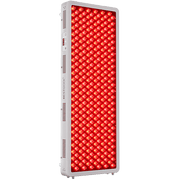










 Small
Small
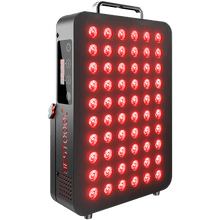
 Moderate
Moderate
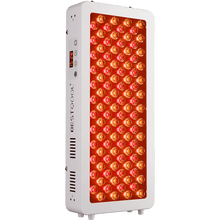
 Moderate
Moderate
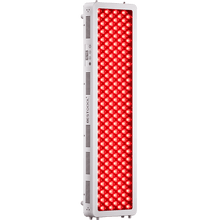
 Moderate
Moderate
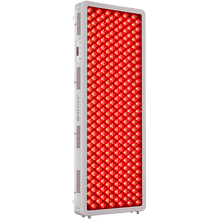
 Full
Full



